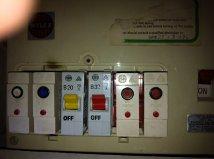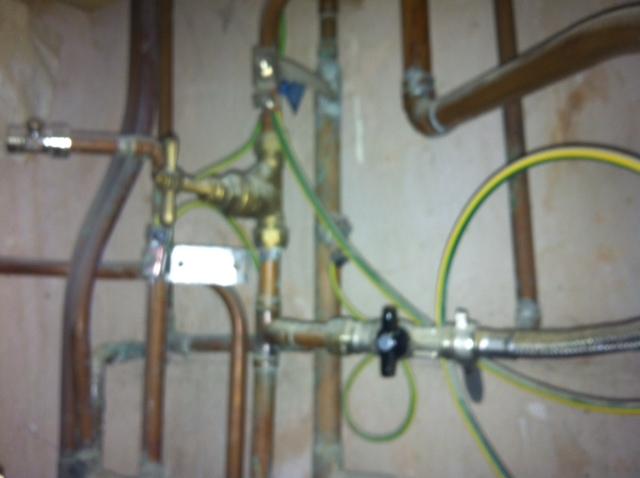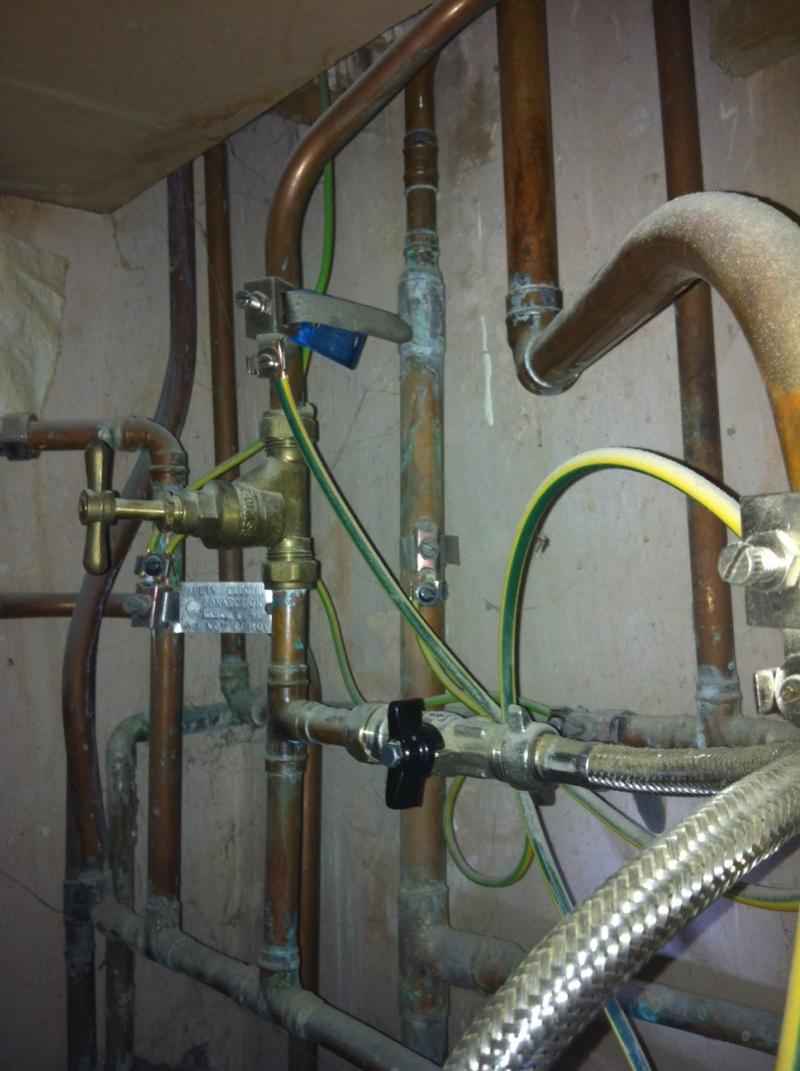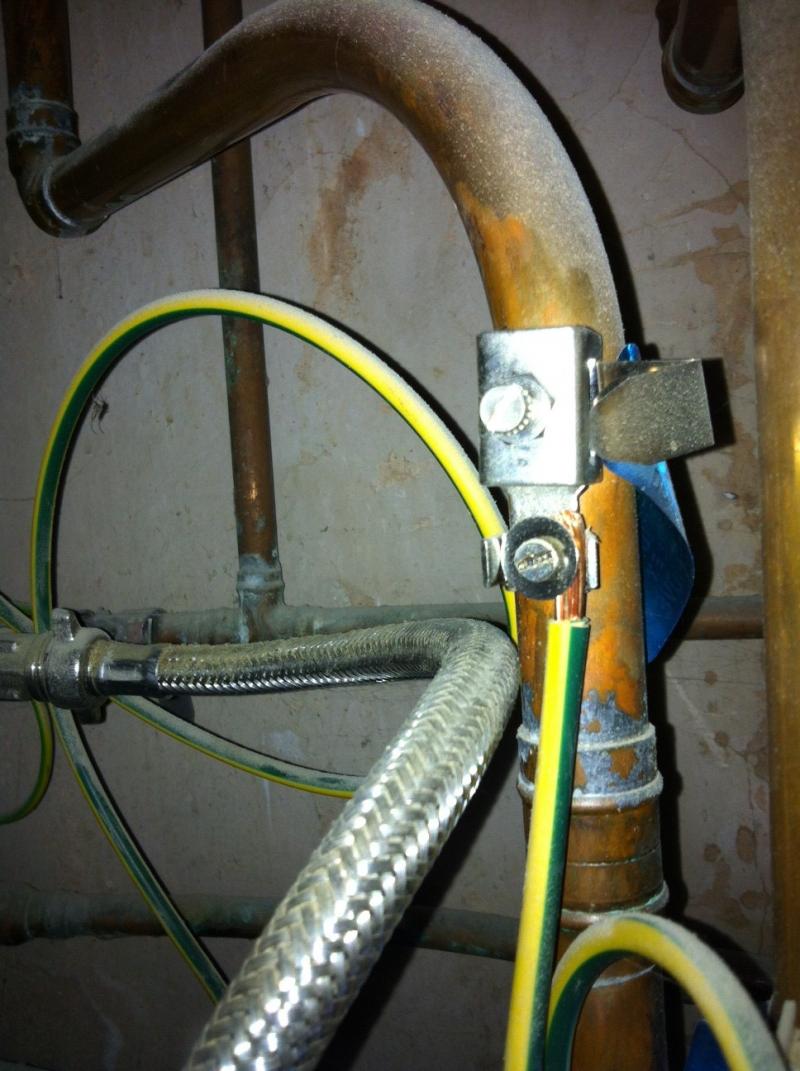Hi
I would like some advice please. My skill level is competent diyer.
I live in a converted flat in a Victorian 1900 building, I have an old electric circuit board, pic attached
I am reffitting my bathroom, removing the old suite and replacing with a new one. In my bathroom I currently have a shaver point, one ceiling light, a sink, bath, toilet and a shower (not electric) and a radiator.
As far as I can see the hot and cold pipes are not Supplementary bonded inside the bathroom.
Is it possible the bonding is outside my bathroom before the hot and cold pipes enter the room? Or is it possible that it was not regulation to have Supplementary bonding when the suite was last installed?
When I replace my suite for a new one will I need to have Supplementary bonding in place? Or is this not necessary if its not in place already?
If I need Supplementary bonding can I do this or should this be done by an electrician?
Currently I have an acrylic bath but I will be changing this for a steel one. Additionally my new sink will have a metal stand and the low level toilet will include a chrome pipe.
Advice would be much appreciated.
I would like some advice please. My skill level is competent diyer.
I live in a converted flat in a Victorian 1900 building, I have an old electric circuit board, pic attached
I am reffitting my bathroom, removing the old suite and replacing with a new one. In my bathroom I currently have a shaver point, one ceiling light, a sink, bath, toilet and a shower (not electric) and a radiator.
As far as I can see the hot and cold pipes are not Supplementary bonded inside the bathroom.
Is it possible the bonding is outside my bathroom before the hot and cold pipes enter the room? Or is it possible that it was not regulation to have Supplementary bonding when the suite was last installed?
When I replace my suite for a new one will I need to have Supplementary bonding in place? Or is this not necessary if its not in place already?
If I need Supplementary bonding can I do this or should this be done by an electrician?
Currently I have an acrylic bath but I will be changing this for a steel one. Additionally my new sink will have a metal stand and the low level toilet will include a chrome pipe.
Advice would be much appreciated.






